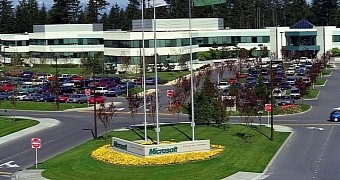Former Microsoft CEO Steve Ballmer started a company-wide reorganization last year, trying to push the software empire to a completely new approach that would also put the focus on devices and services.
The new CEO, however, wants Microsoft to become a mobile first, cloud first company, which is in essence pretty much the same thing, but with increased involvement in the cloud business.
No matter which way they choose to go, it would be better for Microsoft to split up, Colin Gillis, technology analyst at BGC Financial, has recently said in a note to investors, explaining that HP’s example could really come in handy this time.
Gillis claims that Microsoft can be divided into three different businesses, namely software, hardware, and enterprise, each operating independently and focusing on own projects.
Colin Gillis, technology analyst at BGC Financial
With three different units that would generate their own sales, Microsoft could reduce losses and boost specific sides of the business, including the hardware industry where it remains far behind rivals, the analyst explains.
What’s more, the enterprise sector is very likely to become Microsoft’s cash cow, he says, while hardware and consumer sales might not go as planned, he continues.
“Given the recent announcement of HP’s plan to split into two different businesses in a tax-free manner, it raises the issue that if Microsoft is unable to generate meaningful hardware sales, or reignite the PC market, that shareholder(s) may best be served by the company splitting into three businesses: hardware, software, and enterprise services,” the analyst adds.
Nadella wants just “One Microsoft”
Since taking over from Steve Ballmer at the helm of the company, Satya Nadella has referred to Redmond’s business as to “One Microsoft,” explaining that all divisions must work closer together to create a better environment for both consumers and organizations.
The One Microsoft approach is actually at the core of the company’s long-term plan, as Nadella is now trying to bring together all Windows versions into a single platform that would power PCs, tablets, smartphones, and smaller devices.
At the same time, the One Windows strategy, which could be started in spring 2015 with the help of Windows 10, could help Microsoft continue its focus on the Internet of Things world, as the new operating system would offer greater compatibility with smart objects.
What’s more, Nadella is also pushing Microsoft to a more consumer-oriented business, pointing out that future projects could only be developed based on feedback received from users.

 14 DAY TRIAL //
14 DAY TRIAL //